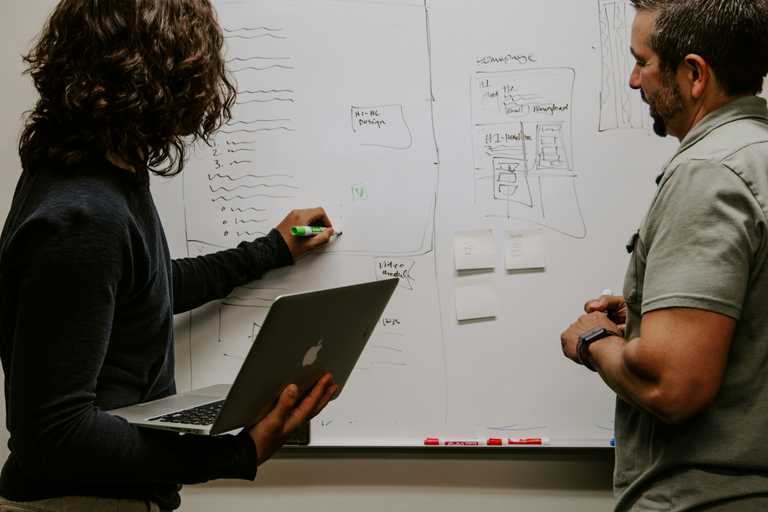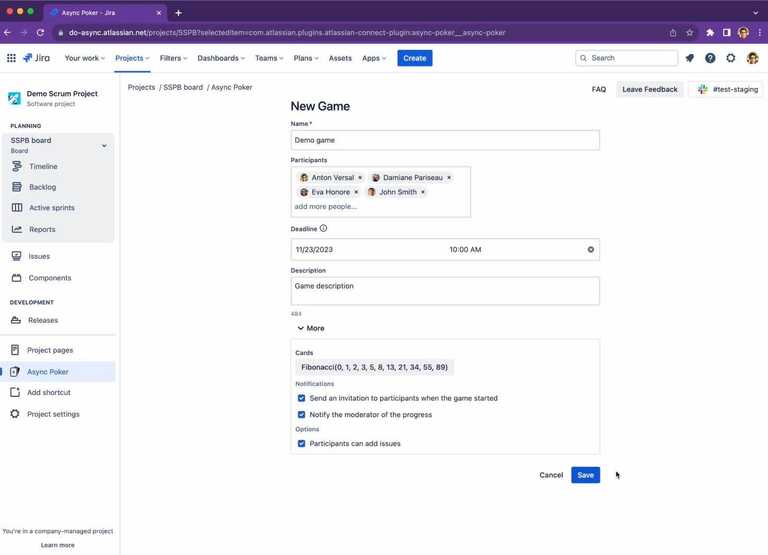Product Backlog Estimation: The Best Strategy to Adopt in 2024
The accuracy of product backlog estimation relies on the strategy you use to estimate backlog items. So, which estimation strategy to adopt in 2024? Let's find out!

Product backlog estimation is an important component of a Scrum framework that empowers the team to plan the Sprints effectively. Considering the widespread use of Scrum, there are now many ways to estimate product backlog. However, it is important to use the best strategy/way to estimate product backlog for maximum output. That's what we will learn today. In this guide, we will talk in detail about the best strategy to adopt in 2024 for estimating product backlog. So, let's get started!
Why is Product Backlog Estimation Essential?
Before we discuss the best strategy to adopt for product backlog estimation, it is important to know the necessity of estimating backlog in Scrum.
The product backlog is a list of prioritized tasks that the Scrum team uses to plan and deliver valuable increments during the upcoming sprints. Estimating the product backlog helps the team get a proper understanding of the efforts required to complete tasks.
Some of the key reasons why product backlog estimation is essential in Scrum projects are as follows:
- Well-informed Scrum Team: It makes the team well-informed about the key tasks, complexities, and expected outcomes for the upcoming sprints.
- Enhanced Productivity: A well-informed team becomes more focused and productive because they know the expected outcomes of their efforts.
- Improved Collaboration: It brings all Scrum team members together to have a collaborative discussion around backlog items. This leads to improved teamwork and collaboration.
- Pinpoint Uncertainties: It is a perfect way to pinpoint uncertainties or bottlenecks for certain tasks in a timely manner that can become a bigger concern if detected late. This helps the team take proactive measures in a timely manner.
- Effective Decision-Making: It empowers the team and stakeholders to make better decisions around project timelines and release schedules.
- Improved Quality: It helps improve product quality due to the efficient handling of all product stages.
- Detect Dependencies: It helps to detect dependencies of certain items on others. This helps to re-prioritize the backlog items to tackle dependencies correctly.
In short, there are a wide range of benefits of estimating product backlog in Scrum. Therefore, it is necessary to use the best strategy for backlog estimation to maximize the outputs.
To learn more about the necessity of product backlog estimation, read our comprehensive blog on what can go wrong without estimating.
The Best Strategy for Product Backlog Estimation in 2024
As mentioned earlier, a Scrum team can estimate product backlog using different ways. However, you must use the best strategy that offers the most accurate estimates of backlog. That's where the Planning Poker estimation technique shines by using a consensus-based, relative estimation strategy. In addition, Async Poker is a modified form of Planning Poker that best suits remote teams. So, let's now discuss both these techniques in detail.
What is Planning Poker and How to Estimate Product Backlog with it?
Planning Poker is a consensus-oriented and relative estimation technique. In this technique, the Scrum team or estimators estimate the efforts required for each backlog item one by one by reaching a consensus after everyone's opinion.
The Product Owner or client reads the backlog item (or user story) to the estimators to begin the session. Each estimator has a set of Planning Poker cards with numbers like 0, 1, 2, 3, 5, 8, 13, 40, and 100. These numbered cards are the indicator of the effort required for the backlog item. They don't reflect the time or complexity of the task.
After hearing the user story from the Product Owner or client and having a necessary discussion, the estimators pick the card that best reflects the efforts required to complete the user story. If everyone has picked the same card, it is considered the team's estimate. Otherwise, the estimators discuss the user story again, re-estimate, and reach a consensus.
This way, Planning Poker provides a consensus-based estimation technique where every estimator plays an equal role in estimating product backlog items.
The main steps involved in a Planning Poker estimation technique are as follows:
- All the relevant Scrum team members join the session along with Product Owner, Scrum Master, and key stakeholders.
- Estimators (or development team members) are given a set of Planning Poker cards.
- The Product Owner or client reads the first user story.
- The estimators clarify their doubts and have a quick discussion about the user story.
- After discussion, every estimator picks one card whose value reflects the efforts required to complete that user story and then places it on the table with the number facing down.
- Once all estimators have placed their cards, they all reveal instantly.
- If there are mismatches in values, then estimators giving the lowest and highest story points are given a chance to convey their thoughts.
- After discussion, estimators again pick cards and reach a final team's estimate for that user story by consensus.
- The above steps continue for all the remaining backlog items.
This is how a typical Planning Poker session is conducted. Now, the question is why Planning Poker is the best strategy for product backlog estimation in 2024.
To better understand this, below are the key benefits you can get by deploying the Planning Poker technique:
- Collaborative Estimation: It provides a collaborative way to estimate backlog items where every member has a say in the estimate.
- Remove Biases: The smart use of numeric cards eradicates the unintentional biases in the estimates.
- Transparency: The whole estimation process becomes transparent and visible to everyone.
- Higher Accuracy: The discussion rounds and consensus-based approach leads to accurate estimates.
Simply put, Planning Poker ticks all the checkboxes to maximize the outcomes of the estimation sessions and empower the Scrum team to begin sprint planning with a well-estimated and prioritized backlog.
What is Async Poker and When to Use it?
Async Poker is a modified version of Planning Poker that modifies a few steps and removes the need for the participants to be physically present.
In this technique, estimators receive the user stories to be estimated. Estimators can read and estimate the user stories at any time and deliver the estimates before the deadline. The moderator then collects all estimates, compares them, and reaches a consensus. If there are mismatches, the estimators can join a quick online meeting to discuss the mismatch, re-estimate, and reach a consensus.
The main steps involved in a typical Async Planning Poker estimation technique are as follows:
- The moderator (Product Owner) shortlists the estimators and the user stories to be estimated.
- The moderator sends the user stories to the estimates and specifies the deadline for providing the estimates.
- The estimators read, understand, and estimate user stories at their own pace and send them to the moderator.
- The moderator collects all the estimates for all estimators, reaches a consensus, and informs the estimators after the final estimates. If there are major mismatches, the estimators can join a quick online meeting to discuss, re-estimate, and finalize the estimates.
This way, Async Poker slightly modifies the Planning Poker and makes the whole process remote-based.
There are many scenarios where Async Poker can be considered a better alternative to Planning Poker, such as:
- When the Scrum team is working remotely or involves a distributed or collocated team model.
- When the Scrum team doesn't want to waste time in prolonged in-house estimation sessions.
- When newbies need extra time reading, understanding, and estimating user stories.
- When estimators want to better understand user stories in the form of written descriptions.
- When the Scrum team wants to improve estimation efficiency further by empowering estimators to estimate user stories at their own pace.
In short, Async Poker is best when you want to increase the efficiency of Planning Poker and save time during estimates. In fact, there are now tools like Async Poker for Jira or monday.com that provide a one-stop place to execute all Async Poker steps with simple clicks.

Read more: 9 Tips for New Teams to Optimize Backlog Estimation
Tips & Tricks for Effective Product Backlog Estimation with Planning Poker
Although Planning Poker is already a well-organized technique for estimating backlog items, the below tips and tricks can further elevate the accuracy and efficiency of the estimation with Planning Poker:
- If two sizes get equal votes, choose the bigger one and move forward.
- If there is no consensus after three rounds of discussion, choose the largest size.
- Keep the estimation session fun and interactive.
- Don't get deep into technical discussions.
- Don't let stakeholders estimate user stories.
- Set a timer to keep discussion rounds brief.
- Use the "I need a break" card to have some gaps in the estimation session.
- Use Planning Poker tools like Sync Poker for better management.
All the above practices can help you maximize the use of Planning Poker and increase the estimation accuracy.
Read more: Dos and Don't of Scrum Backlog Estimation
Wrapping Up
Product backlog estimation is the key to having a well-informed team and well-prioritized product backlog before heading for sprint planning. For that, Planning Poker is the best technique that involves everyone, makes the estimates transparent, and ensures consensus-based estimates. On top of that, if your team involves remote members or wants to save time while estimating, Async Poker is a better choice.
So, choose between Planning Poker and Async Poker based on your Scrum team dynamics and start doing accurate estimates of your product backlog in 2024.


